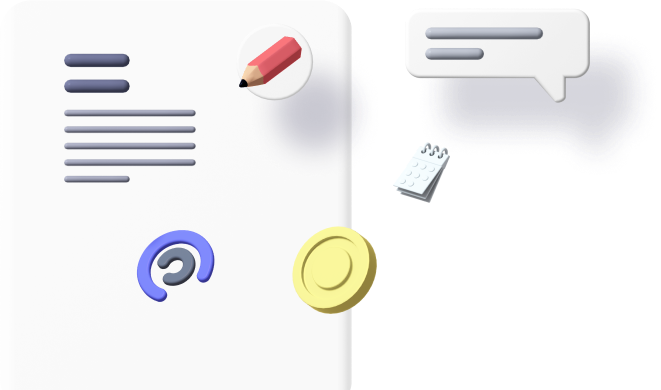Introduction to On-Page SEO
On-Page SEO refers to the optimization techniques that are applied directly within a website to improve its ranking in search engine results. It plays a crucial role in ensuring that a website is both user-friendly and search engine-friendly.
Key Elements of On-Page SEO
- Content Optimization – High-quality, relevant, and engaging content is essential. Using targeted keywords naturally within the content helps search engines understand the topic and rank the page accordingly.
- Keyword Usage – Incorporating primary keywords in titles, headings, and throughout the content improves SEO performance. However, keyword stuffing should be avoided.
- HTML Tags – Elements like title tags, meta descriptions, and header tags (H1, H2, H3) help search engines crawl and index the page effectively.
- Internal Linking – Connecting different pages within the website improves navigation and distributes link equity, enhancing overall SEO.
- Page Speed & Mobile-Friendliness – A fast-loading and mobile-responsive website provides a better user experience, which is a ranking factor in Google’s algorithm.
Why On-Page SEO is Important?
By implementing effective on-page SEO strategies, websites can:
✔ Enhance user experience
✔ Increase organic traffic
✔ Improve search visibility
✔ Boost conversion rates
Every website owner should focus on on-page SEO, as it forms the foundation of a strong digital presence.
The highlighted words emphasize the core concepts of the blog: mobile-friendliness, its importance, and the benefits for businesses.

Importance of On-Page SEO
A well-optimized webpage helps search engines understand the content, structure, and relevance of your site. On-page SEO is crucial because it ensures that your content aligns with search intent, making it easier for users to find relevant information.
By optimizing your website, you can:
- Enhance crawlability and indexing, ensuring search engines can properly analyze your pages.
- Improve user engagement, leading to lower bounce rates and higher conversion rates.
- Achieve higher rankings and increased organic traffic, making your website more discoverable.
Difference Between On-Page and Off-Page SEO
- On-Page SEO involves optimizing elements within the website, such as content, meta tags, and images.
- Off-Page SEO focuses on external factors like backlinks, social media marketing, and brand mentions.
- While on-page SEO ensures website quality and relevance, off-page SEO helps build authority and trust in the digital landscape.
- Both strategies are essential for a comprehensive SEO strategy that drives long-term success.
Keyword Research for On-Page SEO
Keyword research is the process of finding relevant and high-traffic search terms that users enter into search engines. Selecting the right keywords is crucial for improving content visibility and SEO rankings.
Using tools like:
- Google Keyword Planner
- Ahrefs
- SEMrush
you can discover search volume, competition, and trends. Effective keyword placement in titles, headings, and body content helps boost SEO performance, making your pages more relevant to user searches.
Optimizing Title Tags for SEO
A title tag is an HTML element that defines the title of a webpage. It appears in search results and browser tabs, making it a key ranking factor.
Best practices for title tag optimization:
- Keep it under 60 characters for better visibility.
- Incorporate the primary keyword naturally.
- Make it compelling to increase click-through rates (CTR).
A well-optimized title tag enhances search engine rankings and attracts more visitors.
Meta Descriptions and Their Impact
A meta description is a short snippet of text that appears below the title in search engine results. It serves as a summary of the webpage, helping users understand what the page is about.
Best practices for meta descriptions:
- Include target keywords for better SEO.
- Keep it within 150-160 characters.
- Add a call-to-action (CTA) to encourage clicks.
A well-crafted meta description boosts CTR and improves search visibility.
URL Structure Best Practices
A clean and SEO-friendly URL improves both user experience and search engine rankings.
Best practices for URL optimization:
- Keep URLs short and descriptive.
- Use hyphens (-) instead of underscores (_).
- Incorporate relevant keywords naturally.
- Avoid unnecessary parameters and numbers.
A well-structured URL enhances crawlability and indexing by search engines.
Proper Use of Header Tags (H1, H2, H3, etc.)
Header tags (H1-H6) help structure content, making it easier for search engines and users to navigate.
- The H1 tag should contain the main keyword and define the primary topic.
- Subheadings (H2, H3, etc.) should break content into sections, improving readability.
- Proper header tag usage enhances content organization and SEO ranking.
Keyword Placement Strategies
Strategic keyword placement improves SEO performance while keeping content natural and engaging.
Best places to include keywords:
- Title tag and meta description.
- First 100 words of content.
- Subheadings (H2, H3, etc.).
- Image alt text for accessibility.
- Throughout the content in a natural flow.
⚠️ Avoid keyword stuffing, as it can lead to search engine penalties. Proper keyword optimization makes content SEO-friendly and user-friendly.
Content Optimization for SEO

High-quality content is the backbone of On-Page SEO. It should be unique, informative, and engaging, with proper keyword integration.
Best practices for content optimization:
- Use bullet points and short paragraphs for better readability.
- Include visuals (images, infographics, videos) to improve engagement.
- Regularly update old content to keep it relevant.
- Add internal links to improve navigation and SEO.
- Optimize for featured snippets to increase search visibility.
Well-optimized content enhances search rankings and improves user experience.
Importance of Image Optimization
Optimized images improve website speed and user engagement. Since page load time is a ranking factor, optimizing images is crucial.
Best practices for image optimization:
- Use compressed file formats like JPEG and PNG.
- Reduce file sizes without losing quality.
- Add descriptive file names with relevant keywords.
Proper image SEO helps pages load faster, improving search engine rankings.
Alt Text and Image SEO
Alt text (alternative text) is a description added to images to improve accessibility and SEO. It helps search engines understand the image content, making it essential for image search rankings.
Best practices for alt text:
- Use descriptive, keyword-rich alt text.
- Keep it concise and relevant.
- Avoid keyword stuffing, as it can negatively impact SEO.
Well-optimized alt text improves website accessibility and boosts SEO rankings.
Internal Linking Strategies
Internal links connect pages within the same website, helping search engines crawl and index content more efficiently.
Best practices for internal linking:
- Use anchor text with relevant keywords.
- Link to important pages with high value.
- Maintain a logical site hierarchy to improve navigation.
Effective internal linking boosts SEO and keeps users engaged longer on the website.
External Links and Their Role in SEO
External links point to high-authority websites, adding credibility to your content.
Benefits of external links:
- Improve SEO rankings by linking to trusted sources.
- Provide users with additional valuable information.
- Show search engines that your content is well-researched.
Using relevant, high-quality external links strengthens your SEO strategy and enhances user experience.
Mobile-Friendliness and SEO
Google prioritizes mobile-first indexing, meaning websites must be responsive and fast-loading to rank well. A mobile-friendly website ensures a seamless user experience across all devices.
Best practices for mobile optimization:
- Use a responsive design that adapts to different screen sizes.
- Optimize font sizes, buttons, and layouts for touchscreens.
- Improve page speed to prevent high bounce rates.
A well-optimized mobile site enhances SEO rankings and user engagement.
Page Loading Speed Optimization
Website speed impacts both user experience and search rankings. Slow websites lead to higher bounce rates and lower conversions.
Ways to improve page speed:
- Compress images to reduce file size.
- Implement caching techniques to load pages faster.
- Minimize HTTP requests by reducing scripts and stylesheets.
- Optimize CSS, JavaScript, and HTML for efficiency.
Faster loading times lead to better SEO performance and user retention.
Core Web Vitals and Their SEO Impact
Core Web Vitals measure key aspects of website performance and user experience. Google considers these as ranking factors:
- Largest Contentful Paint (LCP): Measures loading speed. Keep it under 2.5 seconds.
- First Input Delay (FID): Measures interactivity. Aim for less than 100ms.
- Cumulative Layout Shift (CLS): Measures visual stability. Keep it below 0.1.
Improving Core Web Vitals enhances SEO rankings and user satisfaction.
Schema Markup and Rich Snippets
Schema markup is structured data that helps search engines display rich snippets in results, such as:
- ⭐ Ratings & Reviews
- ❓ FAQs
- 🍽 Recipes
- 📆 Event Details
Benefits of Schema Markup:
- Increases click-through rates (CTR).
- Improves search visibility with enhanced results.
- Helps search engines better understand webpage content.
Adding structured data can significantly boost organic traffic.
Canonical Tags and Duplicate Content Issues
Canonical tags prevent duplicate content issues by specifying the preferred version of a page.
Why canonical tags are important:
- Prevents SEO penalties due to duplicate content.
- Consolidates ranking signals to one main page.
- Ensures URL consistency in search engines.
Proper canonicalization helps maintain SEO authority and ranking stability.
User Experience (UX) and SEO

A positive user experience (UX) is essential for improving SEO rankings, as Google prioritizes websites that keep users engaged. Poor UX can lead to high bounce rates, which negatively impact rankings.
Key factors that enhance UX and SEO:
- ✅ Easy Navigation – A well-structured website with clear menus and links helps users find content quickly.
- ✅ Mobile Responsiveness – Websites must be optimized for all devices, ensuring smooth functionality on smartphones and tablets.
- ✅ Fast Load Times – A website should load within 2-3 seconds to prevent users from leaving.
- ✅ Interactive Elements – Features like live chat, comments, and call-to-action buttons encourage user engagement.
Websites with a strong UX design not only rank higher on search engines but also retain visitors longer, increasing conversion rates.
Importance of Readability in SEO
Readability ensures that website content is easy to understand and engaging, leading to higher retention rates and better SEO rankings.
Tips to improve readability:
- Write in a conversational tone – Avoid complex words or jargon.
- Use short sentences and paragraphs – Improves readability and scanning.
- Break up text with bullet points and subheadings – Makes information digestible.
- Use active voice – Example: Instead of saying “The blog was written by the author,” say “The author wrote the blog.”
- Font size and spacing – Use 14px-16px fonts and proper line spacing for better readability.
Search engines prefer well-structured, clear content, as it improves user engagement and dwell time on the page.
SEO-Friendly Content Structure
A well-organized content structure makes it easier for users and search engines to understand and rank content effectively.
Elements of a well-structured blog post:
- Title (H1) with the main keyword – Example: “Effective On-Page SEO Strategies for Higher Rankings”
- Introduction – A short summary explaining what the article covers.
- Headings (H2, H3, H4, etc.) – Organize sections for easy navigation.
- Bullet Points and Numbered Lists – Help highlight key points.
- Internal Links – Connect to related articles to improve navigation.
- Call-to-Action (CTA) – Encourage users to take action, such as subscribing or downloading resources.
A structured SEO-friendly format improves readability, engagement, and search rankings.
Social Media Integration for On-Page SEO
Social media signals don’t directly impact SEO rankings, but they help in brand visibility and traffic generation. Websites that receive more social shares often see improved organic search performance.
How to integrate social media into SEO strategy:
- Add social sharing buttons – Encourage visitors to share content on platforms like Facebook, Twitter, and LinkedIn.
- Post regularly on social media – Share blog posts, case studies, and infographics.
- Engage with users – Respond to comments and questions on social platforms.
- Use hashtags – Helps increase content reach and discoverability.
- Collaborate with influencers – Drives more engagement and backlinks.
A strong social media presence indirectly supports SEO by driving more traffic and boosting engagement metrics.
Common On-Page SEO Mistakes to Avoid
Avoiding these common SEO mistakes will improve website performance, ranking, and user experience.
✅ Mistakes to avoid in On-Page SEO:
- Keyword Stuffing – Overloading content with keywords makes it unreadable and can lead to Google penalties.
- ❌ Bad Example: “Our SEO services are the best SEO services in SEO ranking.”
- ✅ Good Example: “Our SEO services help businesses improve search rankings.”
- Duplicate Content – Publishing the same content across multiple pages confuses search engines and hurts rankings.
- Slow Website Speed – Websites that take longer than 3 seconds to load lose visitors.
- Not Optimizing Images – Using large, uncompressed images slows down site performance.
- Ignoring Internal Linking – Without internal links, search engines and users struggle to navigate the site.
- Lack of Meta Tags – Meta titles and descriptions should always be optimized for better click-through rates (CTR).
- Broken Links – Links leading to error pages (404) hurt user experience and SEO.
Fixing these SEO mistakes ensures higher rankings, better engagement, and more conversions.
Conclusion
On-page SEO is the foundation of a successful digital strategy, ensuring that websites are optimized for both search engines and users. By focusing on key SEO elements such as:
✅ High-quality content that is informative, engaging, and valuable.
✅ Keyword optimization to improve search relevance and visibility.
✅ Meta tags (title tags and meta descriptions) for better CTR.
✅ Internal linking to enhance site structure and navigation.
✅ Mobile-friendliness for a seamless user experience.
As search engine algorithms evolve, staying updated with best practices and continuously refining on-page SEO strategies is essential. Websites that prioritize both technical SEO and user experience (UX) can achieve:
- Higher search rankings
- Sustainable organic traffic growth
- Better user engagement
- Increased conversions and online authority
By implementing effective On-Page SEO techniques, businesses can stay competitive, reach their target audience, and build a strong digital presence for long-term success.




One reply on “Mastering On-Page SEO The Ultimate Guide to Boost Your Rankings”
intern.training
This was incredibly insightful and helped me approach my project with a fresh perspective.